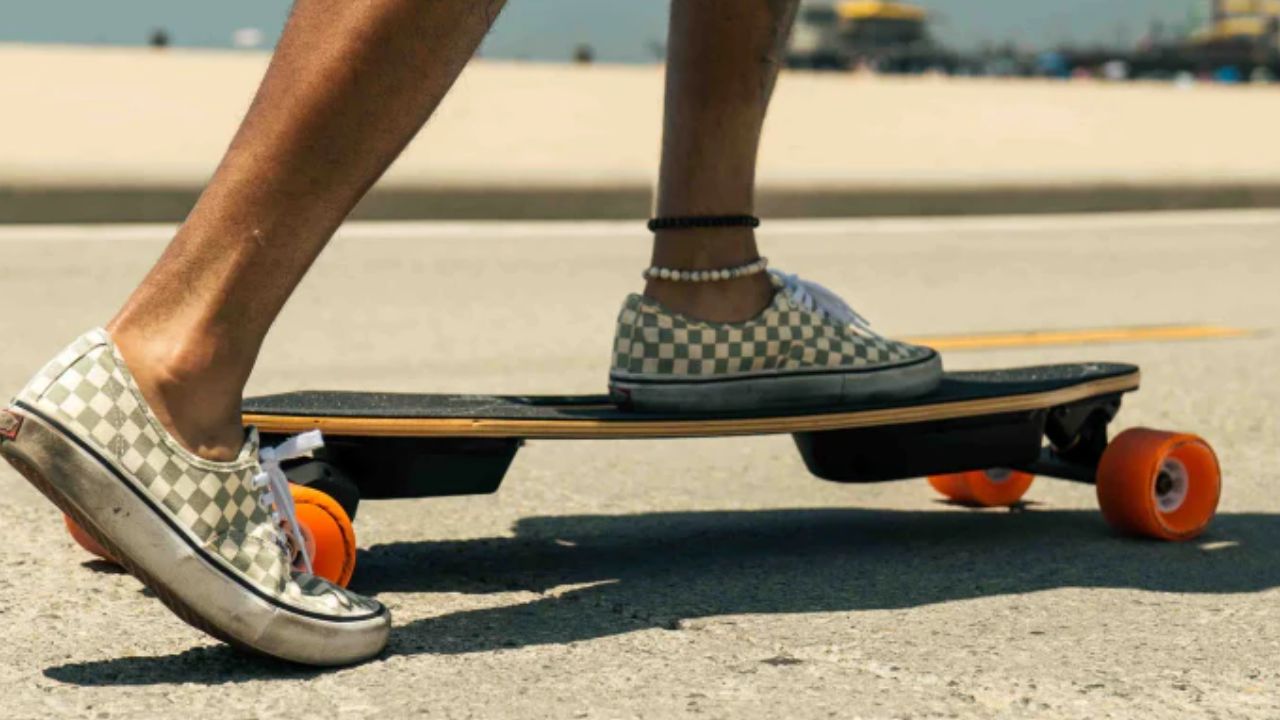An average electric skateboard's top speed might vary significantly based on the type, manufacturer, and motor power. Nonetheless, the majority of electric skateboards are made to go between 15 and 30 miles per hour or 24 and 48 kilometers per hour.
Certain high-performance versions can reach speeds of over thirty miles per hour, especially those intended for off-road use or experienced riders. To select the best electric skateboard for your needs, it's critical to carefully consider every detail when examining the specifications, from motor power to battery capacity.
It's important to remember that the electronic speed controller frequently allows riders to alter the maximum speed, allowing them to choose their desired pace according to the riding conditions and skill level. Riding at faster speeds requires prudence and wearing the proper safety gear at all times, especially in traffic or in uncharted territory.
How Do Electric Skateboards Work?
Rechargeable lithium-ion batteries power the electric motors found in electric skateboards, which are usually either belt-driven or hub motors located within the wheels. A wireless remote control gives the rider the ability to change direction and speed.
The electronic speed controller (ESC) controls the motors' power distribution and offers regenerative braking and acceleration. The throttle on the remote control is used for acceleration, and the brake lever is used for deceleration.
The deck and trucks offer stability and steering as the passenger leans or adjusts their weight, resulting in a comfortable and effective form of personal transportation. Electric propulsion systems and electronic controls are combined with conventional skateboard parts to create electric skateboards.
Electric Motor:
Electric skateboards are propelled by one or more electric motors. These motors are typically hub motors, which are integrated into the wheels, or belt-driven, which are connected to the wheels by a belt and pulley system. These motors are powered by lithium-ion batteries.
Battery:
A rechargeable lithium-ion battery pack powers the electric skateboard. The battery's capacity determines how far the skateboard can go between charges. When the battery is completely charged, electrical energy is retained.
Electronic Speed Controller (ESC):
An essential component that controls the speed and power supply of electric motors is the Electronic Speed Controller (ESC). The system manages braking, acceleration, and deceleration by decoding data from the rider's remote control. The ESC makes the ride smooth and responsive.
Remote Control:
To interact with the ESC, the rider uses a wireless remote control. A throttle for accelerating and a brake lever for braking and slowing are commonly found on remote controls. Other functions including speed modes and battery level indicators are available on certain remote controls.
Throttle and Braking:
The skateboard moves ahead when the rider applies the throttle on the remote control, which boosts the motor power supplied by the ESC. On the other hand, the ESC lowers power when the rider applies the brake lever, enabling braking and deceleration.
Regenerative Braking:
Many electric skateboards come with this capability. This function turns the motor into a generator when it brakes by flipping the way it operates. During this process, some of the kinetic energy is converted back into electrical energy and stored in the battery.
Deck and Trucks:
Stability and control on a skateboard are greatly enhanced by the deck and trucks. Leaning or changing their feet, the rider uses their body weight to steer while standing on the deck.
Final Words
Electric skating boards are powered by an arrangement of an electric motor, lithium-ion battery, wireless remote control, and electronic speed controller. Together, these parts allow for responsive, enjoyable skating on the skateboard, controlled acceleration, and regenerative braking when needed. Due to the skater's input via the remote control, the stability and control features of the deck and trucks, and the rider's input through the deck, electric skateboards are a convenient and environmentally friendly mode of personal transportation.

